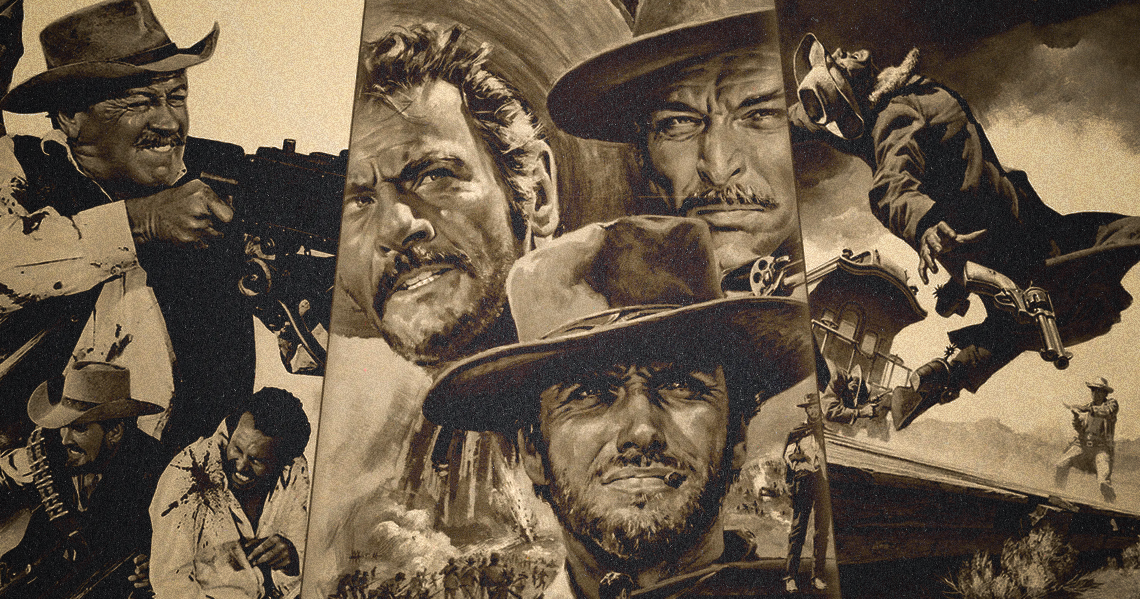Cinema's Wild Frontier:
Analyzing the West through Data

My narrative delves into the captivating world of Western movies, a genre that has significantly shaped the landscape of American cinema. I began my journey with 'Stagecoach,' a 1939 classic that redefined the genre, setting a precedent for the Westerns that followed. This narrative seeks to explore the evolution of Western movies, examining their themes, popularity, and cultural impact over the decades.
Why Western Movies?
I chose Western movies for their enduring appeal and significant role in cinema history. These films not only depict the American frontier, but also the societal changes and the evolution of storytelling in film. Additionally, Westerns have even influenced foreign cinema, with the genre's popularity in Italy giving rise to the Spaghetti Western.
Throughout this project, I intend to explore several questions:
- How do my personal ratings compare to the average ratings of the Westerns I've watched?
- How many Westerns have I watched per year?
- What are the most common subgenres of Westerns?
- Who are the most common directors of Westerns?
- Who are the most common Western stars?
- What are the most common words in Western titles?
To answer these questions, I watched a ton of Western movies, rating them as I went along. Then, I collected data about the movies I watched, including their titles, release years, directors, subgenres, and ratings by what was available on Letterboxd.
Before we begin, let's explore the narrative history of the Western genre:
Iconic Western Scenes
Having glimpsed at the rich history of the Western genre, let's delve deeper into its evolution, enduring appeal, and commonalities through data.
High Noon Standoff
Personal vs Average Ratings
Comparing my personal ratings to the average of various Westerns, I found that my preferences often align with general audience opinions. For example, many of the acclaimed or popular Westerns I've watched, such as 'The Good, the Bad, and the Ugly', 'Once Upon a Time in the West', and 'The Searchers' have been both highly rated by myself and the general public. There are several Westerns, however, that I have rated higher than the general public, such as 'The Assassination of Jesse James by the Coward Robert Ford'. Additionally, there are some I have rated lower, such as 'Sholay' and 'Giant'.
This comparison not only showcases my personal preferences but also underlines the subjective nature of movie enjoyment, where personal experiences and perspectives play a crucial role. I have always been fairly critical with my ratings, which can help explain the differences between my ratings and the general public's.
For further information on my ratings, check out my Westerns Ranked list, where I've ranked all the Westerns I've watched.
Riding Through the Years
Number of Westerns per Release Year
Data shows a fluctuating pattern in the number of Westerns I've watched per release year . The 1950s, 1960s, and 1970s were the most prolific decades for Westerns. The 1980s saw a significant decline in the number of Westerns released, with a rise in the contemporary Westerns of the 1990s and 2000s offering a fresh take on the genre.
These trends mirror the genre's fluctuating popularity over the years, with revivals often sparked by groundbreaking films or cultural shifts.
Frontier Favorites
Top Western Subgenres
Among the Westerns I've watched, certain subgenres were more common than others. The most common subgenres were the Classic, Spaghetti, Revisionist, and Contemporary Westerns. For a long time, the Classic Western was most commonly found, but as the genre evolved, it gave way to other subgenres, significantly departing from traditional Western tropes, and offering fresh perspectives on the Old West.
Masters of the West
Prolific Directors in the Saddle
Directors like John Ford, Sergio Leone, and Anthony Mann feature prominently in my Western filmography. Their distinctive styles, from Ford's panoramic landscapes to Leone's operatic storytelling and extreme closeups, have not only influenced my view of the genre but also shaped Western cinema as a whole.
The prominence of the repeated directors in my viewing history underscores their significant and lasting impact on the genre, crafting narratives that transcend time and continue to resonate with audiences.
Legends of the Old West
Iconic Western Stars
The pantheon of Western actors is as vast and varied as the landscapes these films are set in. Central figures like John Wayne, Clint Eastwood, and Henry Fonda not only dominate the genre but have become synonymous with the very idea of the Western hero. Their portrayals range from the archetypical rugged individualist to the morally complex antihero, reflecting the evolving ethos of American society and cinema.
These actors, through their recurring roles in Westerns, have not only carved out a permanent space in cinematic history, but have also shaped our collective understanding of the Western genre. Their portrayals embody the evolving American spirit, from the rugged individualism of the frontier days to the more introspective and morally ambiguous modern era. Their enduring popularity in these roles underscores the lasting appeal of the Western hero and the timeless themes explored in these narratives.
Echoes of the Desert
Common Words in Western Titles
Common words in the titles of Westerns I've watched include 'West', 'Wild', and 'Country'. These words reflect the genre's depiction of the American frontier along with its vast landscapes. Other common words like 'Guns','Dead', and 'Outlaw' reflect the genre's traditional focus on lawlessness, violence, moral ambiguity, and the anti-hero.
The language used in these titles evokes the quintessential themes of the Western genre, encapsulating the struggle between civilization and wilderness, good and evil.
